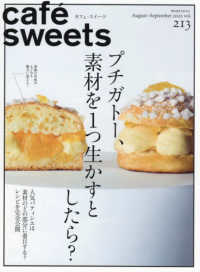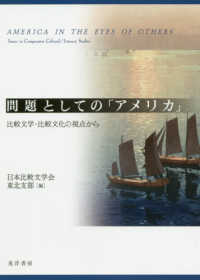- ホーム
- > 洋書
- > フランス書
- > ARTS ET BEAUX LIVRES
- > Arts majeurs
- > Photographie
基本説明
Une jeunesse
"Ton archive conserve ce monde dans lequel nous vivions tel qu'un lieu réel, qui autrement pourrait être confondu avec un rêve."
Mère
Khamsa signifie "cinq" en arabe. Répété trois fois comme une incantation protectrice, ce mot représente l'espace dans lequel j'ai grandi avec mes frères et soeurs, à l'abri de tout mauvais oeil. À la maison, nous parlons hébreu, anglais et français, ayant déménagé en France depuis Israël en 2007. Mais concrètement, nous avons grandi dans une bulle. Un monde imaginaire créé par nos jeux et nos personnages.
La plus jeune est Sara, 15 ans. Avant elle, Jonathan, 17 ans, Michael, 20 ans, Nina, 22 ans, et moi, 25 ans, l'aînée. Entre portraits d'amis et scènes domestiques, mon regard évolue pendant que mes frères et soeurs grandissent. Quand j'avais 10 ans, je me suis promis de ne jamais oublier le regard d'enfant : tout est nouveau, imagination et réalité se confondent, l'inconnu est fascinant.
Les récits coming of age sont souvent documentés par un parent, mais ici, c'est l'aînée protectrice, à la fois participante et observatrice, qui s'efforce d'honorer ces moments d'entre-deux.
Nous avons grandi hors de l'école traditionnelle, dans une philosophie alternative dénommée l'"instruction en famille", articulée autour des besoins et des désirs de chaque enfant. L'approche de mes parents consistait à nous accueillir au monde dans l'amour et la joie pendant les sept premières années, puis à nous laisser explorer des activités et la vie sociale jusqu'à l'âge de 14 ans et, enfin, à nous soutenir dans un projet personnel - dans mon cas, la photographie - qui se professionnalise jusqu'à nos 21 ans. Sans école pour nous distraire, tout se mettait en place naturellement.
Full Description
Khamsa, the number five in Arabic, a reference to the five fingers of the hand, is repeated three times as a protective mantra. This work is a visual autobiography in the form of a family archive. With its intermittent portraits of friends and domestic tableaux, the work focuses on five main protagonists: her sisters Sara and Nina, her brothers Michael and Jonathan, and Julia, the fifth sibling whose presence is projected on them from behind her lens.
To begin with Julia Gat tells the stories of childhood and teenage years growing up with her four brothers and sisters, schooled outside any education system via alternative teaching methods. Through images of what is essentially a family album, the artist developed her own distinct photographic approach. As she observes the faces of friends and family around her, their changing bodies and the beautiful Mediterranean landscapes, Julia Gat tells her story.
For the artist, documenting her daily life created a breadcrumb trail via which, from the maturity of adulthood, she has been able to stay in touch with her childhood sensibilities: "When I was 10, I promised myself I'd never forget how a child sees the world: everything is fresh and new, the imagination blurs with reality and the unknown is fascinating."
"Khamsakhamsakhamsa is an invitation to bring a new sense of freedom to the process of learning, a blessing for which I am grateful."
At a time when home-learning is regulated by government policies, Julia Gat's first work is a tribute to a different form of education based on experimentation and the importance of allowing early artistic expression to flourish. The artist's work is a candid portrait of her upbringing and reveals a talent openly embracing the freedom to tell her own story.








